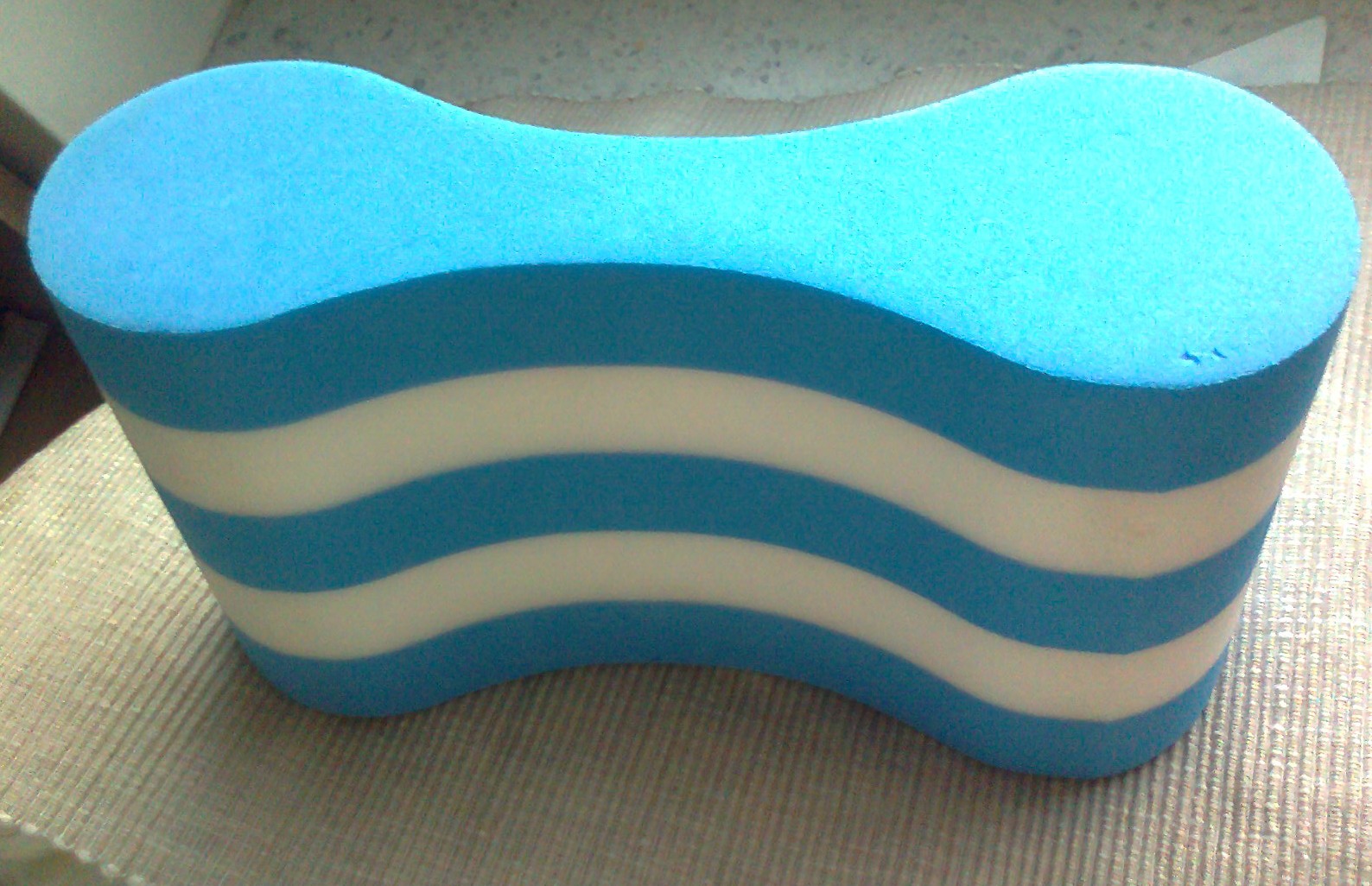|
Pull Buoy
A pull buoy or leg float is a figure-eight shaped piece of closed-cell foam used in swim workouts. Swimmers place the buoy between their thighs or their ankles to provide support to the body without kicking their legs; this allows the swimmer to focus on training only their arms and developing both endurance and upper body strength. The pull buoy was originally invented by Fred Carbonero in the 1960s. Carbonero was a swim coach and created the pull buoy to add resistance in the water. He started a company called Pull Buoy in 1964. Using the pull buoy gives the arms a more focused workout by providing flotational support for hips and legs. Good body position and technique can be established and a bilateral breathing rhythm can be refined. The pull buoy can be combined with a rubber ring to tie one's feet together, so there is no notion of kick. It also provides individuals with heavy legs with a way to be better positioned in the water. ''Pull buoy'' is often confused with ''p ... [...More Info...] [...Related Items...] OR: [Wikipedia] [Google] [Baidu] |
Swim Stroke
Human swimming typically consists of repeating a specific body motion or swimming stroke to propel the body forward. There are many kinds of strokes, each defining a different swimming style or crawl. In high school, collegiate, and Olympic swimming, there are two undulating strokes (breaststroke and butterfly stroke) and two alternating strokes (front crawl and backstroke). Most strokes involve rhythmic and coordinated movements of all major body parts — torso, arms, legs, hands, feet, and head. Breathing typically must be synchronized with the strokes, too. It is possible, however, to swim by moving only legs without arms or only arms without legs; such strokes may be used for special purposes, for training or exercise, or by amputees (paralympians) and paralytics. Swimming styles Within a competitive sense particularly, swim stroke techniques are continuously changing to become either easier or more efficient as more people explore the activity. * Front crawl: the faste ... [...More Info...] [...Related Items...] OR: [Wikipedia] [Google] [Baidu] |
